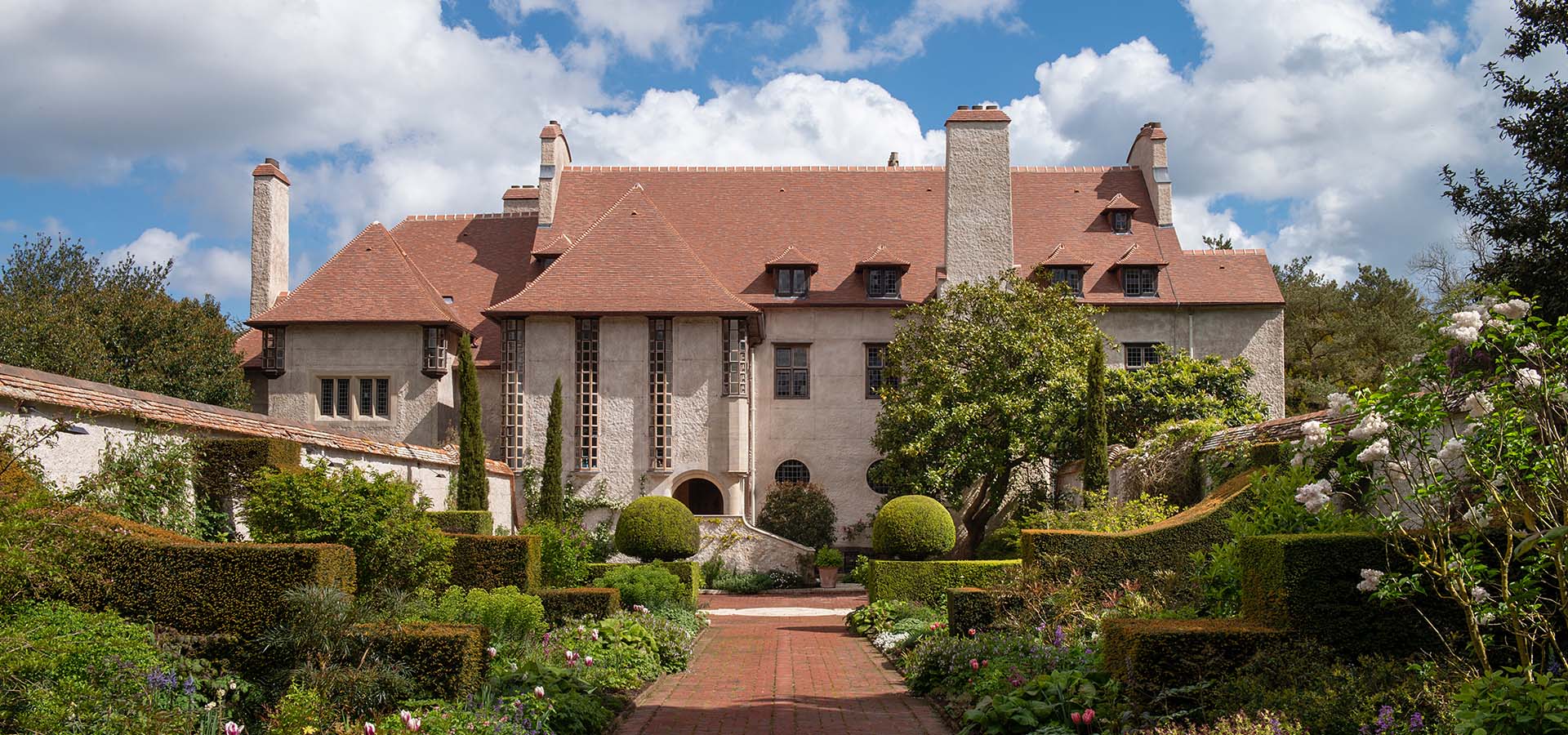
Text written by Emmanuel Ducamp
Le Bois des Moutiers
Acquired by Sophie and Jérôme Seydoux in 2020, the large park Le Bois des Moutiers, located at Varengeville-sur-Mer in Normandy, has just been restored under the direction of American landscape artist Madison Cox.

Madison Cox, handpicked by destiny
Who could have predicted that Madison Cox would return to Le Bois des Moutiers nearly forty years after his first visit in 1982. At that time, he met Mary Mallet – daughter-in-law of Guillaume Mallet, the park’s creator –, who had set out to revitalise the gardens from 1954, after the neglect and the damage suffered during the Second World War. Cox’s first impression of the place, and one that only intensified during his second visit in 1992, was that Le Bois des Moutiers is not like other parks: it has its own character, a singular spirit that some might call a soul. By a marvellous twist of fate, he returned for a third time in May 2019, when the new owners entrusted him with the park’s renaissance.
What makes up the soul of a garden? Its geographical location for sure, the ups and downs of its terrain, the nature of its soil, its orientation in relation to the sun’s trajectory and how it captures light… factors that Guillaume Mallet weighed up before choosing to settle there in 1898.

The soul of a garden
He saw potential but the challenge was not minor. The best view, out to the sea, was directly north, with an immediate plunge to a small valley; to the south, a relatively limited space was broken up by the access path to the house. The latter is what prompted the great British architect Sir Edwin Lutyens and his partner, landscape artist Gertrude Jekyll, to create, on the south side, leading up to the house, highly architectural gardens containing high walls enclosing garden rooms. On the other side facing the sea, Guillaume Mallet allowed “nature” – and a less formal, “English” landscape – to flourish, taking advantage of the soil’s acidity and the possibility of planting azaleas and rhododendrons, flowers for which Le Bois des Moutiers would become famous. Over the years, the spirit of the garden persisted but several defects started to appear, hindering its long-term viability and rendering a full restoration more than overdue when the new owners arrived.
Given that the park’s soul was so strong, “stronger than an individual’s ego” in the words of Madison Cox, it was very important both to him and to Sophie and Jérôme Seydoux that the project be handled with humility: their watchwords were to honour and to preserve.

Restoring with respect
To preserve, it was first necessary to carry out “in-depth” work, “all the stuff you don’t see”! It’s often overlooked that the perennity of plantations depends on the quality of the soil and on its drainage, especially in undulating terrain and a region – Normandy – saturated with water. The first key stage of the project consisted in repairing all drains and creating water reserves. In a park of the age of Le Bois des Moutiers, the second stage was to evaluate the health of the trees, to determine which ones to eliminate and which ones to keep; and, among the latter group, which ones to reinforce with suitable pruning. One of the park’s vital characteristics is its proximity to the sea, and this dictated the third task: it was crucial to recreate a beautiful view to the sea from the bottom of the park, just above the meadows where Monet often came to paint.
Taking together this restoration work, carried out by Madison Cox in collaboration with Fabien Caumont, Erik Moraillon and Guillaume Proust, in accordance with the principles “Plant small” and “Do better than doing it quick”, the reopening of the park to the public for guided visits, proof that the new owners have continued the philosophy of sharing beauty, it is clear that Le Bois des Moutiers is destined to have a long and prosperous future. Deep gratitude is due to Sophie and Jérôme Seydoux for making this renaissance possible, 125 years after the creation of one of the most beautiful examples of “English-style” French gardens.

New plantations and projects for the future
In parallel with the restoration, new plantations were also made because a place like Le Bois des Moutiers cannot remain sterile or static. A labyrinth of yew trees and lines of fruit tree palisades came into being in the former vegetable garden; the collection of Japanese maples at the bottom of the park was enriched; willow trees were planted above one of the sea-viewing locations. In addition, it was decided to not add to the rhododendron collection, the reason being that it was highly representative of the period of the original plantation and restraint had also been exercised with the many new cultivars of the 1960s.
